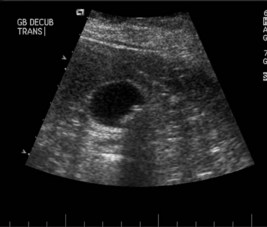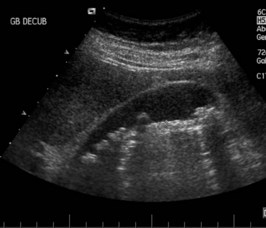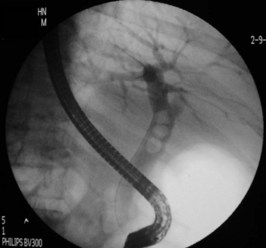Problem 13 Abdominal pain in a young woman
A 28-year-old woman presents to the emergency department with upper abdominal pain. The pain starts in the epigastrium and radiates to the right and left upper quadrants. She rates the pain as 7 out of 10. She has had several similar episodes over the last 6 weeks. During each episode, the pain was of rapid onset and resolved spontaneously after several hours. On each occasion she was nauseated but did not vomit. She is significantly overweight with a body mass index of 36.
An ultrasound examination of the upper abdomen is performed (Figures 13.1 and 13.2).
There is bilirubin + on urinalysis. Her serum biochemistry is shown below.
The day after admission the patient is feeling much better and is pain-free.
The ERCP is performed and the image shown in Figure 13.3 is obtained.
Answers
A.1 Further information must be sought on:
• Any evidence of biliary obstruction during these episodes such as overt jaundice (friends and family may notice), pale stools and dark urine.
Other diagnoses to consider include:
Stay updated, free articles. Join our Telegram channel

Full access? Get Clinical Tree






